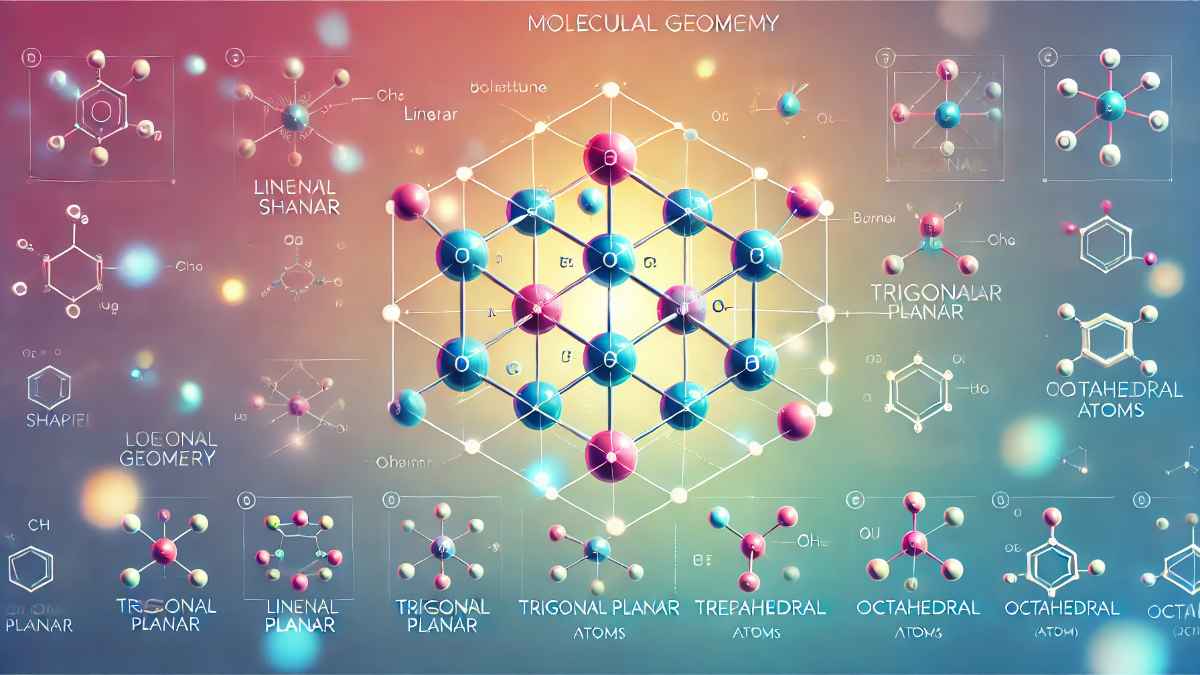How to Remember Molecular Geometry: A Complete Guide
Introduction
Understanding molecular geometry is crucial for mastering chemistry, especially for students dealing with VSEPR theory, hybridization, and molecular bonding. However, remembering different molecular shapes and bond angles can be challenging. Fortunately, with the right mnemonics, visualization techniques, and logical tricks, you can retain molecular structures effortlessly.
This guide will provide simple memory techniques, effective study strategies, and easy-to-follow analogies to help you remember molecular geometry like a pro!
Understanding Molecular Geometry
Molecular geometry refers to the three-dimensional arrangement of atoms in a molecule. It influences a molecule’s properties, including polarity, reactivity, and physical state. The Valence Shell Electron Pair Repulsion (VSEPR) theory helps predict molecular shapes based on electron pair repulsion.
Why Is Molecular Geometry Important?
- Determines bond angles and molecular polarity
- Essential for predicting chemical reactions
- Helps in understanding hybridization and molecular interactions
- Crucial in biochemistry, medicine, and material science
Effective Ways to Remember Molecular Geometry
1. Use Mnemonics and Memory Tricks
Mnemonics simplify complex topics by turning them into memorable phrases or patterns.
- Linear (180°) – “Lone Lines are Straight.”
- Trigonal Planar (120°) – “Three Points on a Plane.“
- Tetrahedral (109.5°) – “Tetra means Four.“
- Trigonal Bipyramidal (90°, 120°) – “Pyramids Have Five Sides.“
- Octahedral (90°) – “Octa Means Eight, But Six Bonds Exist.“
2. Visualize with 3D Models and Diagrams
- Use molecular model kits to build and visualize shapes.
- Leverage 3D visualization apps like MolView and Avogadro.
- Draw Lewis structures to identify electron pairs and lone pairs.
3. Relate to Real-World Objects
- Linear Shape: Resembles a dumbbell or rod (CO2).
- Trigonal Planar: Like a flat tripod (BF3).
- Tetrahedral: Similar to a tripod with a top attachment (CH4).
- Bent Shape: Think of a water molecule bending (H2O).
Key Molecular Geometries and Their Characteristics
| Molecular Geometry | Bond Angle | Example Molecule | Description |
|---|---|---|---|
| Linear | 180° | CO2 | Atoms arranged in a straight line. |
| Trigonal Planar | 120° | BF3 | Flat, three atoms around a central atom. |
| Tetrahedral | 109.5° | CH4 | Four atoms in a pyramid shape. |
| Trigonal Bipyramidal | 90°, 120° | PCl5 | Five bonds in two planes. |
| Octahedral | 90° | SF6 | Six bonds arranged symmetrically. |

Additional Techniques for Memorization
4. Grouping by Electron Domains
Understanding electron domain theory helps categorize molecular geometries:
- 2 Electron Domains → Linear
- 3 Electron Domains → Trigonal Planar
- 4 Electron Domains → Tetrahedral
- 5 Electron Domains → Trigonal Bipyramidal
- 6 Electron Domains → Octahedral
5. Use Flashcards for Quick Recall
- Write the geometry name on one side and the bond angle & example molecule on the other.
- Practice daily recall to strengthen memory.
6. Interactive Quizzes & Online Tools
Several websites and apps offer free molecular geometry quizzes:
- ChemCollective.org
- Khan Academy Chemistry Quizzes
- Molecular Geometry Flashcards (Quizlet)
FAQ Section
1. What is the easiest way to learn molecular geometry?
Using mnemonics, 3D visualization tools, and real-world analogies can make it easier to remember molecular geometries.
2. What is the VSEPR theory and how does it help?
VSEPR (Valence Shell Electron Pair Repulsion) theory predicts molecular shape by considering electron repulsion around the central atom.
3. How do lone pairs affect molecular geometry?
Lone pairs occupy more space than bonded atoms, causing bond angles to decrease, leading to shapes like bent or trigonal pyramidal.
4. How can I visualize molecular shapes without a model kit?
Use online 3D modeling tools like MolView or PhET to interactively manipulate molecular structures.
5. Why is bond angle important in molecular geometry?
Bond angles determine molecular polarity, reactivity, and physical properties, influencing how molecules interact in reactions.
6. What are the common mistakes students make when learning molecular geometry?
- Ignoring lone pairs when predicting shape.
- Misunderstanding hybridization concepts.
- Confusing electron domain geometry with molecular shape.
Conclusion: Mastering Molecular Geometry Effortlessly
Remembering molecular geometry doesn’t have to be overwhelming. By using mnemonics, visualization tools, and grouping strategies, you can easily recall VSEPR shapes, bond angles, and molecular structures. Incorporate interactive learning techniques, flashcards, and real-world analogies to solidify your understanding.
With consistent practice and the right approach, you’ll confidently master molecular geometry and improve your chemistry problem-solving skills. Keep exploring, and happy learning!

